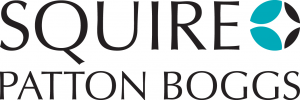10 Myths and Facts about Flying That Will Surprise You
25.09.2015Company: Delta Air Lines, Inc., organizační složka
At some point in your life, you will no doubt have heard some stories about flying that make you go: What?! Surely not! Really?! What is and isn’t true about these myths about flying? I’ve investigated 10 for you.
By Djamilla Bogaard, Social Media department, KLM
1. You can get sucked into an aircraft toilet.
Myth: Although it certainly sounds likely when you push the button and hear that loud sucking sound…
Aircraft toilets have a closed vacuum system. When you flush the toilet, a powerful vacuum system located near the waste tank sucks down anything that’s lying over the hole and draws it down into the tank. And we mean anything! We regularly find objects in the disposal tank that definitely shouldn’t be there.
But never any passengers! The reason being that the vacuum only works near the mouth of the disposal pipe. Yes, if the toilet bowl and seat had an airtight seal, this might have nasty consequences for toilet users who flush when seated. But the toilets and the vacuum system are designed in such a way that you cannot be sucked into the toilet.
2. An aircraft door can be opened during a flight.
Myth: The cabin doors can only be opened if the pressure on the inside and outside of the aircraft are virtually the same.
The pressure inside and outside is certainly not the same after take-off. The air pressure at high altitude is dangerously low, which is why the cabin pressure is increased artificially.
If you look closely at aircraft doors, you’ll see that they fit into the aircraft almost like a cork. A nifty mechanical system ensures that they can also open outwards.
When the door is closed, cabin pressure is exerted on the door. The force with which this takes place is determined by the difference in interior and exterior air pressure and the surface area of the door. As Sir Isaac Newton so succinctly put it: F = p x A.
We won’t bore you with the figures, but we can assure you that this force is far greater than the muscle power of the strongest passenger. In short, you can not just open the door at cruising altitude. Once the plane has landed, the pressure difference is minimised and the doors can be opened.
Only cabin crew are allowed to do this, of course, because the automatic emergency slides have to be disarmed first. When the plane draws to a halt at the gate, you’ll hear the pilot say: “Cabin crew, disarm the slides.” When the monitoring system in the cockpit indicates that all doors are safe, the pilot will say: “Cabin Crew, doors may be opened.”
3. Cabin crew are allowed to arrest a passenger.
Fact: At the request (and on behalf) of the captain, cabin crew are indeed allowed to arrest a passenger.
Naturally, this only happens if the passenger is a threat to flight safety. We even have handcuffs on board for this purpose. The captain has to concentrate on flying the aircraft and therefore can’t carry out the arrest personally. He will, however, formally and personally announce the arrest after landing, before the aircraft doors open.
4. Thunder storms increase the risk of an airplane crash.
Myth: No, thunder does not increase the risk of a crash.
We do avoid thunder storms, of course! Because, as you can imagine, such storms and the related turbulence can be very uncomfortable for passengers.
In addition, lightning striking the aircraft can damage systems, but not to the extend that flight safety is impaired. If this happens, a special comprehensive inspection is conducted once the plane has landed.
5. If you are born aboard an aircraft, you get to fly free of charge for the rest of your life.
Myth: Regrettably, we have to disappoint you on this one…
6. You get drunk more quickly when flying.
Myth: You may get tipsy a little more quickly, because the air on board is drier (which is why you should drink more water) and cabin pressure is lower than on the ground. People are also more inclined to take sleeping pills or sedatives when flying. And they don’t mix well with alcohol, as you probably know.
7. Cabin crew have to meet height requirements.
Fact: This is true! Our cabin crew have to be somewhere between 1.58 m and 1.90 m tall.
8. There is no row 13 aboard an aircraft.
Fact: At KLM, you’ll have a hard time finding row 13, because this is considered an unlucky number in many countries. We’re not superstitious, but you can never be too sure, right?
9. Pilots have a parachute under their seats.
Myth: There are no parachutes aboard our aircraft. Our aircraft have multiple engines, so if one of them fails, there’s no man overboard…literally.
10. Cabin crew speak a minimum of four languages.
Myth: Our cabin attendants speak English and Dutch, at least. But proficiency in other foreign languages is, of course, a bonus!
So, now you know. Some of the stories you’ve heard are true, but most of them are fables. ;)
If you have any further facts and/or fables you’d like me to check, please let me know and I’ll go in search of an answer.







